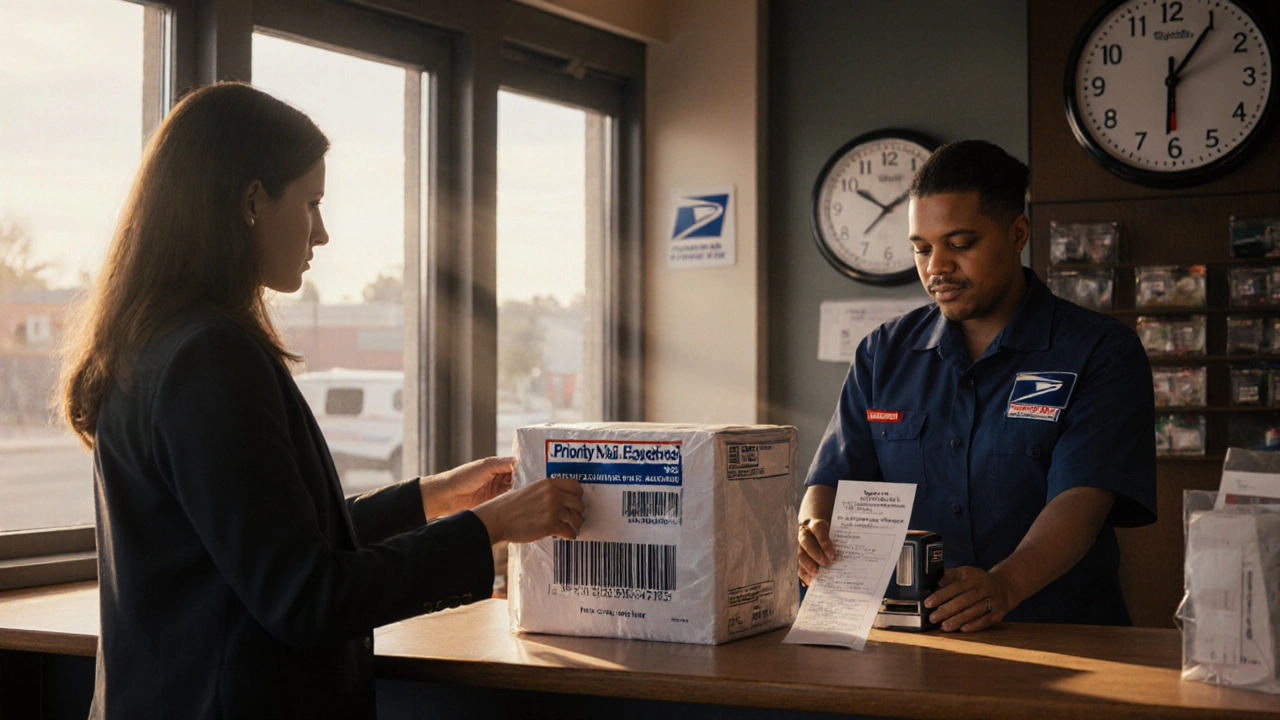Is Priority Mail Express 1‑Day Delivery Guaranteed?
Learn if USPS Priority Mail Express truly guarantees 1‑day delivery, the rules that apply, how to claim refunds, and how it compares to FedEx and UPS overnight services.
When you’re navigating USPS refund policy, the official set of rules the United States Postal Service uses to return postage fees when a shipment is lost, delayed, or damaged. Also known as USPS money‑back rules, it helps both everyday shoppers and businesses understand when and how they can claim back what they paid. In the same space, UPS, another major carrier with its own claim procedures offers a separate pathway, while International Shipping, cross‑border services that add customs and duty considerations brings extra layers of paperwork. Knowing how these pieces fit together saves you time and prevents avoidable headaches.
The first thing to remember is that a refund isn’t automatic. You must submit a claim within the window set by the carrier—usually 30 days for domestic USPS packages and up to 60 days for international shipments. Gather proof of purchase, tracking numbers, and any photos of damage; without clear evidence, the claim will slip through the cracks. USPS refund policy also ties directly to courier delivery times: if a package arrives later than the promised window, you may qualify for a partial refund, but only if the delay is documented. Shipping rates matter too; higher‑value items often require insurance, and the refund amount may be capped at the declared value unless you’ve purchased extra coverage. Comparing this to UPS, you’ll notice UPS tends to require a formal incident report and may process refunds faster for business accounts, while USPS relies heavily on the online claim form and can take up to two weeks for verification.
Another angle to watch is how refund eligibility changes with service type. Priority Mail, First‑Class, and Express each have distinct thresholds for what triggers a refund. For example, First‑Class letters lost in transit usually qualify for a full postage return, whereas Express parcels might only get a partial credit if they miss the guaranteed delivery date. International shipping adds customs duties into the mix; if customs holds your package, USPS typically refunds only the postage, not the duty fees, unless you filed a customs claim alongside the shipment. Finally, keep an eye on the status of your claim. USPS offers an online tracker that updates you on each stage—submission, review, and payment—while UPS provides a more detailed dashboard for corporate users. Staying proactive and following up can shave days off the waiting period.
In practice, the best way to breeze through a refund is to treat the process like any other logistics task: record every step, use the carrier’s official tools, and double‑check eligibility rules before you file. People often overlook the simple fact that a well‑documented claim can be the difference between getting a full refund and walking away with nothing. Whether you’re sending a single bike across town or a batch of products overseas, the principles stay the same. Below you’ll find a curated list of articles that dive deeper into how freight forwarders work, the math behind logistics, and tips on calculating courier prices—each piece designed to give you the practical insight you need to master the refund journey and keep your shipments on track.

Learn if USPS Priority Mail Express truly guarantees 1‑day delivery, the rules that apply, how to claim refunds, and how it compares to FedEx and UPS overnight services.